Exciting News : Little Bird Creative’s Online Shop is Coming Soon!
This month, we have some exciting news to share! We’re delighted to announce that, after having many people tell us how beautiful our designs are, we are opening an online shop!
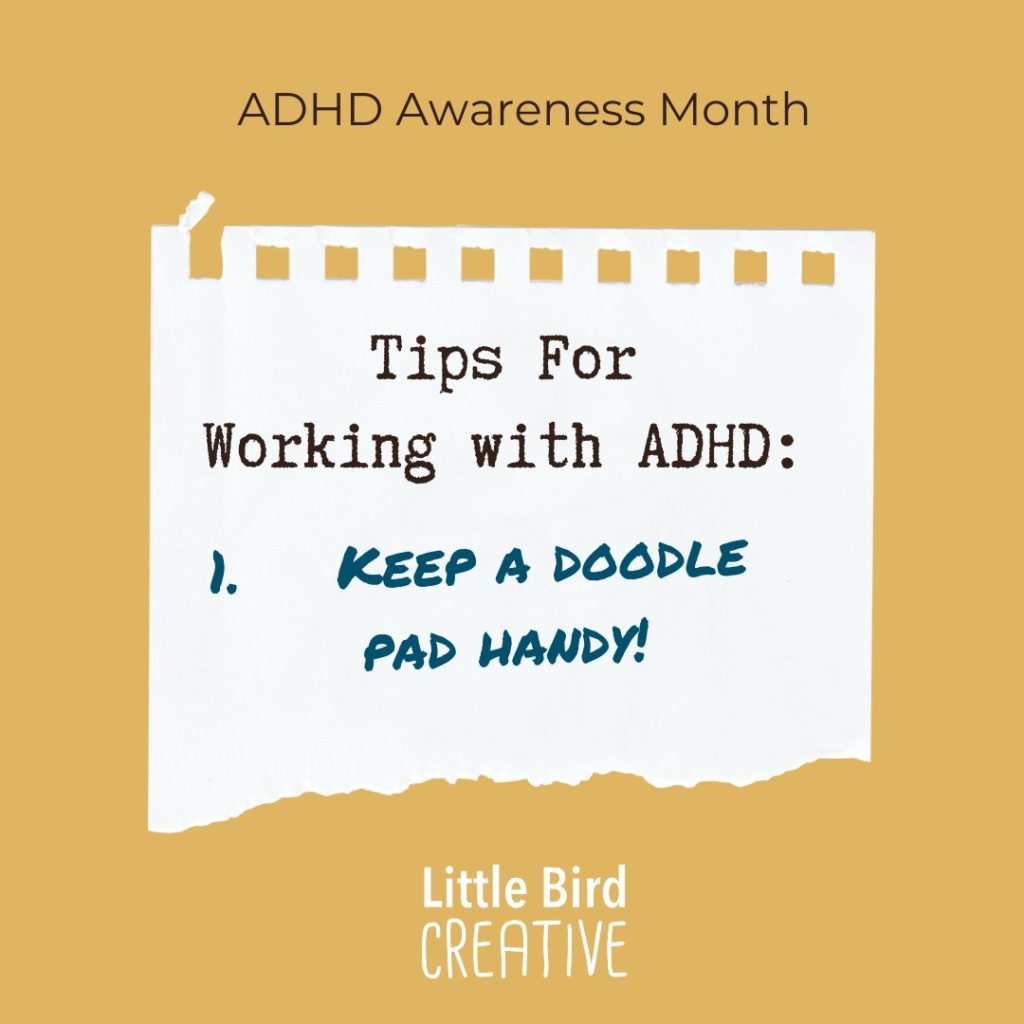
I haven’t always known I’ve had ADHD, but I have always had it. Over the years I’ve noticed that some things that seem easy to other people may as well be climbing Mount Everest to me. But then some of the things that I love (high-pressure, tight-deadline problem-solving!) are the stuff of nightmares to someone else.
Being diagnosed with ADHD means that I now have an understanding that the reason I’m not so great at certain stuff isn’t because I’m lazy, stupid or just need to try harder, it’s because my brain works a bit differently, so the way I approach things might have to be a bit different too.
Here are a few of the ADHD tips that help me remain organised and productive at work.
I have a large speech-bubble-shaped notepad on my desk where I can jot down whatever pops into my head – random lists of ideas, dates, details from a phone call or just scribbles with a pen. Some of it might get transferred somewhere else – like putting appointments into my planner – but it’s a quick and easy first place to just get stuff out of my head before it disappears amongst all the noise in my brain!
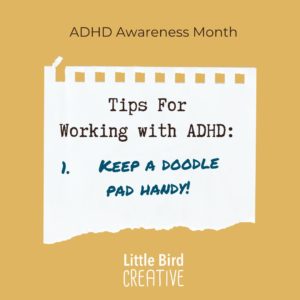
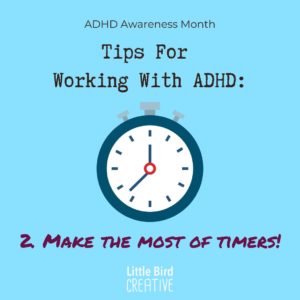
Most people with an interest in productivity will probably have come across something called the Pomodoro Technique (named after the tomato-shaped kitchen timer that was originally used). It’s a time management tool that splits the day up into a series of work and rest blocks. I’m motivated by the urge to “beat the clock” so having the timer tick down is actually a huge boost to my productivity.
It’s also really handy for when you’re struggling to start a task – the more difficult it seems, the shorter you can set the interval – make it 20 minutes, 10 minutes or 5 minutes to avoid that feeling of being locked into a boring task until it’s completed. Turns out you can get a surprising amount done in a short space of time! It can also help with not spending too long doing something (I’m looking at you, video games until 2 am!)
When I have to sit through a Zoom meeting or a phone call – I need to fidget with something. It used to be whatever the nearest thing I could grab from my desk – take the pen lid off, put it on, off, on, off on, play with that hair tie, improvise some origami with a random scrap of paper… My incredibly patient and understanding business partner often had to sit next to me while this was going on and somehow be professional and not throw me out of the window. She also bought me some actual fidget toys to play with, so now I have a selection that are suitable for whatever mood I’m in! Some feel good, some make a great noise – they scratch a weird sensory itch I didn’t even know I had!
Some people might associate fidgeting or doodling with someone who isn’t paying attention, but for a lot of people it helps us focus – it gives our brain just enough extra stimulation to focus where we should be, instead of pinging around in all directions trying to find something to fill that gap.
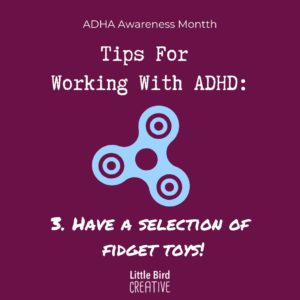
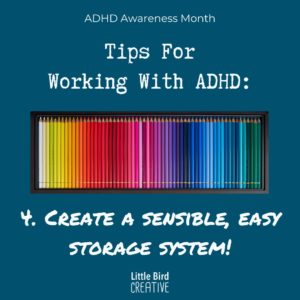
One of my biggest ADHD challenges is housework – it’s not very interesting, it’s not very challenging and worst of all it doesn’t stay done! What do you mean I have to keep cleaning things forever?? Clutter is a real issue and I find a messy space isn’t great for my mood or my ability to focus. I’m fortunate to have a lot of storage space in my office and I’ve been slowly reorganising everything in here in a way that will “make sense” to me.
The things on my computer desk are now the things I grab most often while I’m on the computer. The stuff I find myself frequently reaching for is on easy-to-get-at shelves, whilst the stuff I rarely need is on top of the cupboards.
I’ve also learned not to let perfect be the enemy of good – I love the idea of every single item of stationery I own (and there’s a lot) having a perfect spot where it lives, but that means getting it out and putting it away takes that little bit more time and effort and I’m much less likely to do either. Instead of having a perfect rainbow-order set of pens in a tray – I stick them all in a pot so I can put them away in 10 seconds instead of 1 minute.
You know how when you have a pile of clean washing to put away and just thinking about doing it is enough to make you change your name and go into hiding? (This is not an exaggeration – on a bad day this is definitely how it feels!) Something I’ve noticed is that I easily get overwhelmed by the idea of a seemingly simple task and just…not do it. I know it’s not difficult, I know it won’t really take that long and yet I get paralysed. For times like this, I’ve implemented the “Better Than Nothing” strategy.
Putting away the washing is a nightmare? Put away one pair of socks. Does that sound silly and like a tiny baby would be able to manage more than that? Maybe, but it’s got more of the task done than trying to force yourself to do it all in one go because that’s what a “grown-up” does. This could work with a timer too – one minute spent doing something is more than zero minutes! Quite often once you do get started then momentum can carry you through the rest of it, but, if it doesn’t, a tiny bit is better than nothing!
Not all of this will work for everyone, it doesn’t always consistently work for me. Some days you just slept badly and everything is that bit harder whether you are neurodiverse or not, but even if these things only work 10% of the time – that’s better than nothing!
This month, we have some exciting news to share! We’re delighted to announce that, after having many people tell us how beautiful our designs are, we are opening an online shop!
Event planning can be stressful – the last thing you need is to worry about the promotion! Don’t panic: we’ve got plenty of tips…
In this month’s blog, we look into some of the different uses for copywriting, the tips and tricks you’ll need to keep it fresh and interesting and, lastly, whether it’s worth doing it yourself, or calling in an expert.
These days, having a website for your organisation is indispensable. Thankfully, the wealth of tools available mean that it is easier than ever to design and build your own website, but is it the right choice for you?